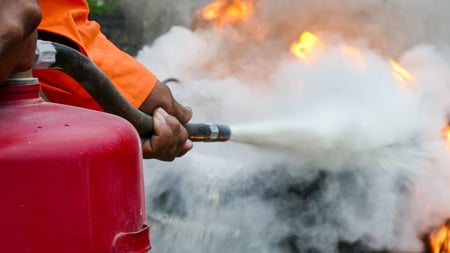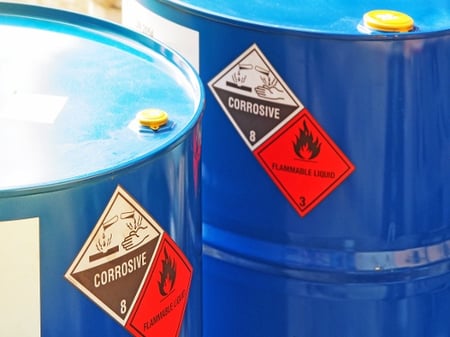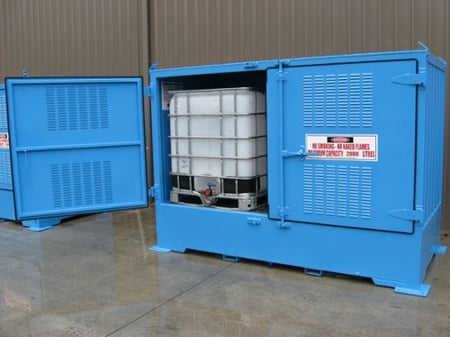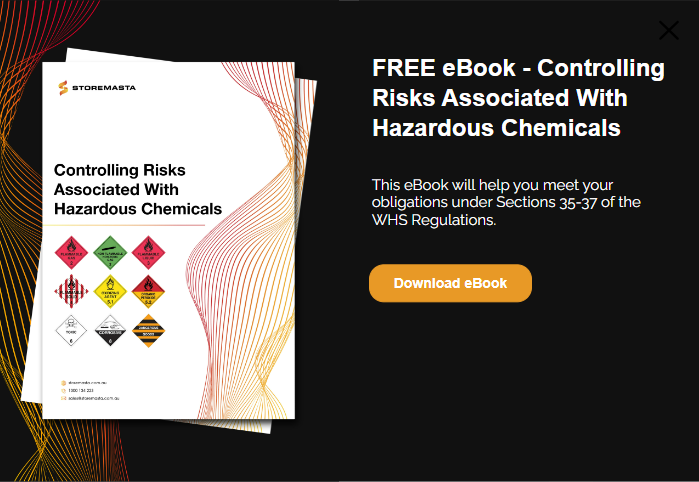There are many considerations you must make when determining your outdoor chemical storage needs. One of the most important factors that can influence the location of your outdoor chemical stores is how close it is to protected places, onsite protected places and public places. But what is a protected place and how far away from it should your stores be? In this blog, we’ll be answering this question by referring to the requirements of the Australian Standards for various classes of dangerous goods such as flammable liquids, flammable solids and organic peroxides.
But first, let’s detail the definitions for protected, onsite protected and public places — and how the proximity of these could affect the placement of your outdoor chemical storage container.
What Is A Protected Place?
A protected place refers to a variety of dwellings, buildings, areas or facilities that may be within or outside the property boundary of your workplace installation.
NOTE: Your workplace installation is defined as the onsite facilities which are used for the storing or handling of hazardous chemicals.
Protected places could include any building or open area where people may assemble inside or outside the property boundary of your installation, including:
- Dwelling
- Residential building
- Public building
- Place of worship
- School
- College
- Theatre
- Hospital
When installing your outdoor store, make sure you’re familiar with the requirements that relate to the location of your store and separation distances.
It could also include a building where people are employed (outside the boundary of your installation) such as:
- Office
- Store
- Shop
- Factory
- Workshop
In addition to this list, other dangerous goods storage areas that are located outside the boundary property of your installation could also be classed as protected places unless they are defined as minor storages.
Definition Of Onsite Protected Place
This is an onsite building at your workplace where people are employed within the property boundary. An onsite protected place includes offices, amenities, warehouses, manufacturing areas, processing facilities and other dangerous goods stores where quantities exceed minor storage.
What Is A Public Place?
The definition of a public place is any place other than private property, that is open to the public. A public place is an area which the public has a right to use and includes a public road. This does not include parking areas for commercial buildings.
Why Are Separation Distances Required For Package Stores?
For many classes of dangerous goods, there are serious risks associated with their handling and storage. By following separation distances for package stores from protected places, onsite protected places and public places, you are decreasing the risk of a chemical hazard affecting a populated site within or close to your business. The separation distances are detailed for various classes of dangerous goods and may be broken down into packing groups for further specifications.
REMEMBER: Full details about the required distances between outdoor chemical stores, and protected, onsite protected and public places, are listed in the Australian Standards for the relevant dangerous goods class that you’re storing.
The impact of incidents such as fires, explosions, toxic vapours and chemical spills will be minimised for the surrounding community due to the separation distances that are required for outdoor chemical stores. Therefore, it’s both a safety and a compliance issue that’s a key consideration when planning out the location of your outdoor dangerous goods storage areas.

To reduce risk to the community, many classes of dangerous goods, such as Class 3 Flammable Liquids, are subject to separation requirements.
What Dangerous Goods Classes Require Separation Distances?
Many classes of dangerous goods must be stored in an outdoor location that’s separated from protected, onsite protected and/or public places.
These dangerous goods classes include:
- Class 3 - Flammable Liquids
- Class 4 - Flammable Solids
- Division 5.1 - Oxidizing Agents
- Division 5.2 - Organic Peroxides
- Class 8 - Corrosive Substances
In the next section of this blog, we’ll go into further detail about the separation requirements for each class.
Flammable Liquids Separation Requirements
Flammable liquids pose a range of risks including fire, explosion and hazardous vapours. The requirements for separation are extensive for Class 3 liquids due to these risks. Requirements include separation from protected, onsite and public places, as well as isolation from ignition sources and segregation from incompatible substances.
Below are just some of the required separation distances from package stores (maximum capacity listed as m3 (kL) to protected places and public places.
Separation distances from Flammable Liquids (PG I, II, III) to protected places:
| Flam. Liquids Class | Flam. Liquids Class | Min. Distance |
| PG I, PG II | PG III | |
| 0.1 | 0.5 | unrestricted |
| 1m3 (kL) | 4m3 (kL) | 3m |
| 2 | 8 | 4m |
| 4 | 16 | 5m |
| 7 | 28 | 6m |
*for further quantities and requirements, please see AS 1940:2017
Separation distances from Flammable Liquids (PG I, II, III) to public places:
| Type Of Store | Min. Distance |
| Storage area for closed flammable liquids packages | 3m |
| Area where flammable liquids packages are opened | 8m |

Some classes of dangerous goods must be separated from protected and public places to minimise risk to the local community.
Flammable Solids Separation Requirements
Due to the chemical’s ability to easily ignite, Class 4 Flammable Solids package stores must be separated from protected places and boundaries by the following distances:
| Aggregate quantity kg/L | A | B | C | D |
| minor storage less than 250 | 10m | 5m | 4m | 3m |
| 250-2000 | 16m | 10m | 6m | 6m |
| 2000-20,000 | 20m | 12m | 10m | 6m |
*for further quantities and requirements, please see AS NZS 5026
Oxidizing Agents Separation Requirements
While these substances are not necessarily combustible, oxidizing agents can contribute to the combustion of other material. Therefore, Division 5.1 substances must be separated from protected places and boundaries by the minimum distance.
The following requirements apply to package stores of oxidizing agents (not including ammonium nitrate):
| Aggregate quantity kg/L | PG 1 | PG II | PG III |
| Less than 1,000 | 5m | 3m | 0* |
| 1,000-10,000 | 8m | 5m | 3m |
| 10,000-50,000 | 10m | 8m | 5m |
*for further quantities and details of the requirements, please see AS 4326:2008
Organic Peroxides Separation Requirements
Package stores for Division 5.2 Organic Peroxides are subject to separation requirements from protected places, boundaries and onsite protected places. You must also adhere to requirements for separation from other classes of dangerous goods and incompatible substances.
To property boundary adjoining public street or railway line:
| Type | kg/L | Unsprinklered store | Sprinklered store |
| B | 250 | 10m | 5m |
| 500 | 15m | 5m | |
| 1,500 | 35m | 7.5m | |
| 2,500 | 45m | 10m | |
| 5,000 | 75m | 15m | |
| C, D, or E | 250 | 3m | 3m |
| 500 | 3m | 3m | |
| 1,000 | 4m | 4m | |
| 2,500 | 5m | 5m | |
| 5,000 | 6m | 6m | |
| F | 1,000 | 3m | 3m |
| 2,000 | 4m | 4m | |
| 5,000 | 5m | 5m |
*for further quantities and requirements, please see AS 2714:2008
To protected places and boundaries adjoining another property:
| Type | kg/L | Unsprinklered store | Sprinklered store |
| B | 250 | 20m | 5m |
| 500 | 30m | 7.5m | |
| 1,500 | 70m | 15m | |
| 2,500 | 90m | 20m | |
| 5,000 | 150m | 30m | |
| C, D, or E | 250 | 5m | 3m |
| 500 | 7m | 3m | |
| 1,000 | 8m | 4m | |
| 2,500 | 9m | 5m | |
| 5,000 | 10m | 6m | |
| F | 1,000 | 3m | 3m |
| 2,000 | 4m | 4m | |
| 5,000 | 5m | 5m |
*for further quantities and requirements, please see AS 2714:2008
Corrosive Substances Separation Requirements
All package stores of Class 8 Corrosive Substances must be separated from protected places. The minimum distances are set out in the table below:
Corrosives stores where packages are opened:
| PG I | 10m |
| PG II | 5m |
| PG III | 3m |
Chemical stores where packages remain closed:
| PG I | 5m |
| PG II | 3m |
| PG III | 3m |
Reducing Risk With Outdoor Chemical Storage
As we’ve highlighted in this blog, there are various classes and divisions of dangerous goods that are subject to the requirements for separation distances from protected places and public places. Always refer to the Australian Standards for your particular class of dangerous good, to determine the storage and handling requirements for your chemicals — including the separation distances that pertain to your outdoor stores.
If you’d like to learn more about risk reduction, we have an eBook that will guide you through the process. Controlling Risks Associated With Hazardous Chemicals will introduce you to our simple and effective risk control methodology, which will enable you to create a safer workplace through achieving chemical compliance. Get your copy for free today by simply clicking on the image below.
Joining the team as a Dangerous Goods Storage Consultant, Melissa Hampton became Storemasta's Marketing Manager in late 2021. With extensive knowledge and experience in chemical compliance, Melissa is responsible for leading the Marketing team and helping shape their marketing strategy. In her spare time, you can find Melissa hiking, swimming and enjoying the great outdoors in beautiful north-west Tasmania.

